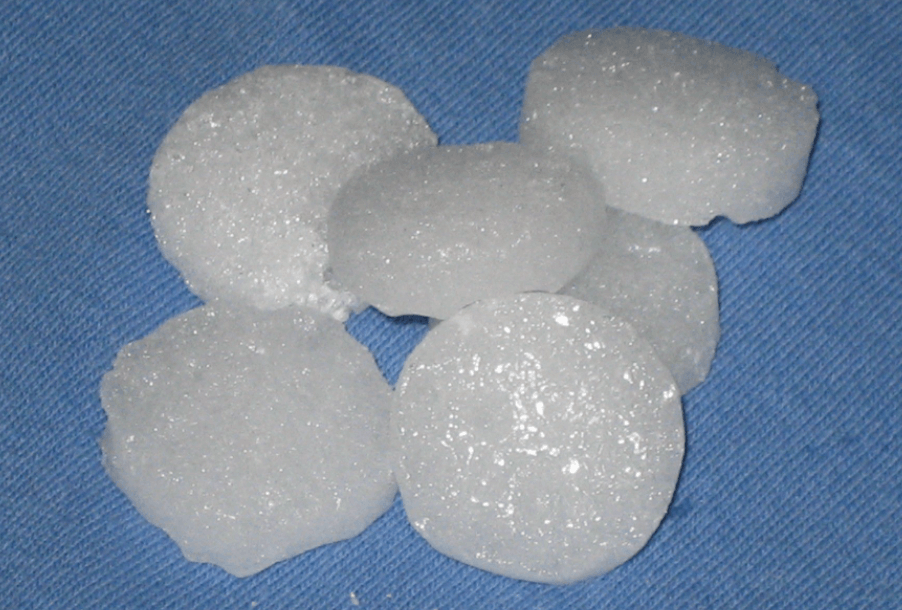What is naphthalene?, How is naphthalene used?, Does the smell of naphthalene harm people? What should we do in naphthalene poisoning? information about it in our article.
What is naphthalene?
Naphthalene is an aromatic smelling substance. Its chemical formula is C10H8. It exists in crystal form. Naphthalene is usually white in color, but there are also transparent and brownish colors. It is used in the manufacture of plastics, resins, fuels and paints. In addition, its solid form is used as an insecticide for moths and pests. Frequently asked is naphthalene compound? answer to the question; is compound .
Where is naphthalene used?
Naphthalene is not found naturally in the environment. It can be released into the environment by the combustion of organic materials such as fossil fuels, oil and wood. Cigarette, that is, tobacco smoke, also releases a small amount of naphthalene into the environment.
Naphthalene, which is used as a moth repellent for the protection of textile products, has now been replaced by 14-dichlorobenzene (PDB). Naphthalene occurs naturally in crude oil and coal layer. It is possible to encounter naphthalene in diesel fuel, gasoline and auto oils. Some are found in paints, explosives and toilet odors.
Naphthalene is used as a refined in agriculture and in the fabric industry. It is the raw material for the production of various organic compounds. The most common is solid naphthalene. It has an odor like coal tar. It is volatile. It has an irritating odor for insects.

How is naphthalene used?
Naphtaline is used in homes to keep moths and other harmful insects away from clothes. For this purpose, naphthalene is added between the clothes while storing woolen clothes. Naphthalene can also be put into sink holes to prevent bad odors in sinks.
When using naphthalene for the protection of woolen garments, the garments should be stored in an airtight box or bag. This will allow evaporation to destroy insect larvae. Stored items should be ventilated before being used again and should be used after washing.
Harms of naphthalene
Naphthalene is not used with food applications. Being in the environment does not always mean that there will be negative effects. Contact must be made in order to adversely affect human health. You can be exposed to the effects of mothballs by breathing, eating or touching them.
Exposure is mostly by inhalation, as a result of burning wood, tobacco or fossil fuels, industrial waste and moth repellents. Factors such as the amount of exposure (dose), the mode of exposure, the duration of exposure and whether it reacts with other chemicals are determinants of the extent to which they can affect health.
Naphthalene is excreted from the body in about 3 days, but it can accumulate in the adipose tissue and stay in the body for a longer time. Toxic if swallowed, may cause liver and kidney damage. Inhaling or ingesting naphthalene can lead to breakdown of red blood cells and kidney failure.
Symptoms that indicate you have been exposed to high levels of naphthalene include fever, blood in your urine, difficulty breathing, abdominal pain, nausea, vomiting, diarrhea, sweating, confusion, jaundice, and dark urine.
Does the smell of naphthalene harm people?
Although the levels of naphthalene used at home are relatively low, it can affect human health by respiration as naphthalene can evaporate. Individuals differ in their sensitivity to naphthalene exposure.
If naphthalene is used incorrectly, that is, if it is not placed in an airtight and sealed object, it may enter the air of the house. Due to the chemicals in naphthalene, it can cause health problems such as headache, nausea, eye and nose irritation and cough.
Exposure to large amounts of naphthalene can damage red blood cells. This condition is called hemolytic anemia. It can also cause serious health problems such as liver and kidney damage. Therefore, excessive and inappropriate use of naphthalene is not recommended for odor and insect control.
There is no evidence that long-term exposure to naphthalene can cause cancer in humans.
How should the safe use of naphthalene be?
Naphthalene is safe for adults when used in the right amount and method. However, it is recommended not to store clothes or blankets for children under the age of three with naphthalene. It should not be kept in small children’s rooms or in areas accessible to children.
Clothes stored with naphthalene should not be worn without deodorizing, that is, airing and washing. It is important to see a doctor if you have symptoms such as nausea, loss of appetite, vomiting, diarrhea and fatigue that indicate you have been exposed to naphthalene.
What to do in case of naphthalene poisoning?
A doctor should be consulted immediately when symptoms such as nausea, abdominal pain, vomiting and diarrhea are encountered, indicating naphthalene poisoning. When treatment is delayed, confusion, increased heart rhythm, low blood pressure and shortness of breath may occur. When coma or convulsions develop, naphthalene poisoning is likely to result in death.
In case of naphthalene poisoning, a treatment plan is prepared according to the patient’s symptoms. After about a few days of treatment, the patient is discharged. It may take several weeks for the patient to fully recover.
During the treatment, serum is applied to the patient. If blood cells are affected, exchange transfusion can be performed. With timely intervention in naphthalene poisoning, it is possible for the patient to regain his health.